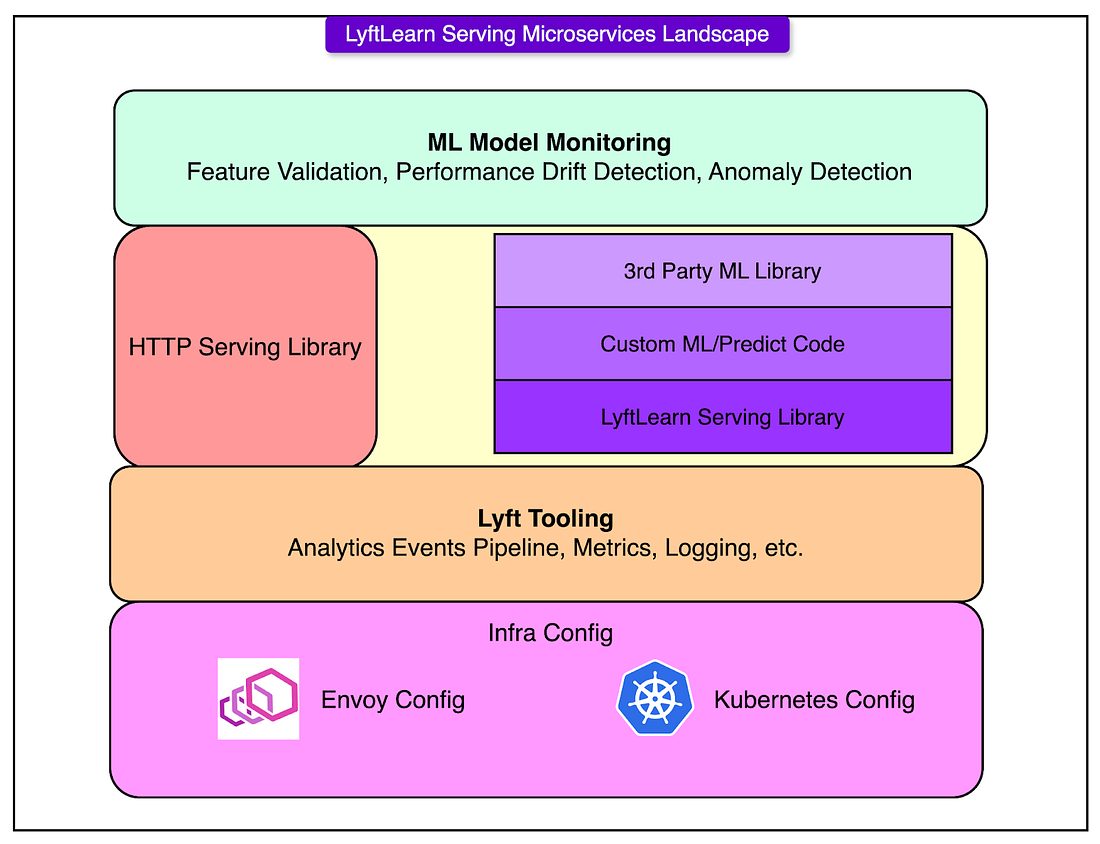Archives
- By thread 5281
-
By date
- June 2021 10
- July 2021 6
- August 2021 20
- September 2021 21
- October 2021 48
- November 2021 40
- December 2021 23
- January 2022 46
- February 2022 80
- March 2022 109
- April 2022 100
- May 2022 97
- June 2022 105
- July 2022 82
- August 2022 95
- September 2022 103
- October 2022 117
- November 2022 115
- December 2022 102
- January 2023 88
- February 2023 90
- March 2023 116
- April 2023 97
- May 2023 159
- June 2023 145
- July 2023 120
- August 2023 90
- September 2023 102
- October 2023 106
- November 2023 100
- December 2023 74
- January 2024 75
- February 2024 75
- March 2024 78
- April 2024 74
- May 2024 108
- June 2024 98
- July 2024 116
- August 2024 134
- September 2024 130
- October 2024 141
- November 2024 171
- December 2024 115
- January 2025 216
- February 2025 140
- March 2025 220
- April 2025 233
- May 2025 239
- June 2025 303
- July 2025 93
-
Cost-Effective Performance
Dear Info,
Balancing performance and cost is critical in the UAV industry. At Micro Magic Inc, we provide high-precision inertial sensors that deliver exceptional value without compromising on quality. Our cost-effective solutions are trusted by leading drone manufacturers worldwide.
Interested in learning more? Let’s arrange a call to discuss further.
Best regards,
Young
Account Manager
Micro Magic Inc
Skypy: manot27
Whatsapp: +8618151836753
Website: www.memsmag.com
by "Karaeski Martirosov" <martirosovkaraeski804@gmail.com> - 12:55 - 10 Jun 2025 -
How Lyft Uses ML to Make 100 Million Predictions A Day
How Lyft Uses ML to Make 100 Million Predictions A Day
In this article, we’ll look at how Lyft built an architecture to accomplish this requirement and the challenges they faced.͏ ͏ ͏ ͏ ͏ ͏ ͏ ͏ ͏ ͏ ͏ ͏ ͏ ͏ ͏ ͏ ͏ ͏ ͏ ͏ ͏ ͏ ͏ ͏ ͏ ͏ ͏ ͏ ͏ ͏ ͏ ͏ ͏ ͏ ͏ ͏ ͏ ͏ ͏ ͏ ͏ ͏ ͏ ͏ ͏ ͏ ͏ ͏ ͏ ͏ ͏ ͏ ͏ ͏ ͏ ͏ ͏ ͏ ͏ ͏ ͏ ͏ ͏ ͏ ͏ ͏ ͏ ͏ ͏ ͏ ͏ ͏ ͏ ͏ ͏ ͏ ͏ ͏ ͏ ͏ ͏ ͏ ͏ ͏ ͏ ͏ ͏ ͏ ͏ ͏ ͏ ͏ ͏ ͏ ͏ ͏ ͏ ͏ ͏ ͏ ͏ ͏ ͏ ͏ ͏ ͏ ͏ ͏ ͏ ͏ ͏ ͏ ͏ ͏ ͏ ͏ ͏ ͏ ͏ ͏ ͏ ͏ ͏ ͏ ͏ ͏ ͏ ͏ ͏ ͏ ͏ ͏ ͏ ͏ ͏ ͏ ͏ ͏ ͏ ͏ ͏ ͏ ͏ ͏ ͏ ͏ ͏ ͏ ͏ ͏ ͏ ͏ ͏ ͏ ͏ ͏ ͏ ͏ ͏ ͏ ͏ ͏ ͏ ͏ ͏ ͏ ͏ ͏ ͏ ͏ ͏ ͏ ͏ ͏ ͏ ͏ ͏ ͏ ͏ ͏ ͏ ͏ ͏ ͏ ͏ ͏ ͏ ͏ ͏ ͏ ͏ ͏ ͏ ͏ ͏ ͏ ͏ ͏ ͏ ͏ Forwarded this email? Subscribe here for moreDatabase Benchmarking for Performance: Virtual Masterclass (Sponsored)
Learn how to accurately measure database performance
Free 2-hour masterclass | June 18, 2025
This masterclass will show you how to design and execute meaningful tests that reflect real-world workload patterns. We’ll discuss proven strategies that help you rightsize your performance testing infrastructure, account for the impact of concurrency, recognize and mitigate coordinated omission, and understand probability distributions. We will also share ways to avoid common pitfalls when benchmarking high-performance databases.
After this free 2-hour masterclass, you will know how to:
Tune your query and traffic patterns based on your database and workload needs
Measure how warm-up phases, throttling, and internal database behaviors impact results
Correlate latency, throughput, and resource usage for actionable performance tuning
Report clear, reproducible benchmarking results
Disclaimer: The details in this post have been derived from the articles/videos shared online by the Lyft Engineering Team. All credit for the technical details goes to the Lyft Engineering Team. The links to the original articles and videos are present in the references section at the end of the post. We’ve attempted to analyze the details and provide our input about them. If you find any inaccuracies or omissions, please leave a comment, and we will do our best to fix them.
Hundreds of millions of machine learning inferences power decisions at Lyft every day. These aren’t back-office batch jobs. They’re live, high-stakes predictions driving every corner of the experience from pricing a ride to flagging fraud, predicting ETAs to deciding which driver gets which incentive.
Each inference runs under pressure and a single-digit millisecond budget. This translates to millions of requests per second. Dozens of teams, each with different needs and models, are pushing updates on their schedules. The challenge is staying flexible without falling apart.
Real-time ML at scale breaks into two kinds of problems:
Data Plane pressure: Everything that happens in the hot path. This includes CPU and memory usage, network bottlenecks, inference latency, and throughput ceilings.
Control Plane complexity: This is everything around the model. Think of aspects like deployment and rollback, versioning, retraining, backward compatibility, experimentation, ownership, and isolation.
Early on, Lyft leaned on a shared monolithic service to serve ML models across the company. However, the monolith created more friction than flexibility. Teams couldn’t upgrade libraries independently. Deployments clashed and ownership blurred. Small changes in one model risked breaking another, and incident investigation turned into detective work.
The need was clear: build a serving platform that makes model deployment feel as natural as writing the model itself. It had to be fast, flexible, and team-friendly without hiding the messy realities of inference at scale.
In this article, we’ll look at how Lyft built an architecture to accomplish this requirement and the challenges they faced.
Architecture and System Components
LyftLearn Serving doesn’t reinvent the wheel. It slots neatly into the microservices foundation already powering the rest of Lyft. The goal wasn’t to build a bespoke ML serving engine from scratch. It was to extend proven infrastructure with just enough intelligence to handle real-time inference, without bloating the system or boxing teams.
At the core is a dedicated microservice: lightweight, composable, and self-contained. Each team runs its instance, backed by Lyft's service mesh and container orchestration stack. The result: fast deploys, predictable behavior, and clean ownership boundaries.
Let’s break down this architecture flow diagram:
HTTP Serving Layer
Every request to a LyftLearn Serving service hits an HTTP endpoint first. This interface is built using Flask, a minimalist Python web framework. While Flask alone wouldn’t scale to production workloads, it’s paired with Gunicorn, a pre-fork WSGI server designed for high concurrency.
To make this stack production-grade, Lyft optimized the setup to align with Envoy, the service mesh that sits in front of all internal microservices. These optimizations ensure:
Low tail latency under high request volume.
Smooth connection handling across Envoy-Gunicorn boundaries.
Resilience to transient network blips.
This layer keeps the HTTP interface thin and efficient, just enough to route requests and parse payloads.
Core Serving Library
This is where the real logic lives. The LyftLearn Serving library handles the heavy lifting:
Model loading and unloading: Dynamically brings models into memory from saved artifacts
Versioning: Tracks and manages different model versions cleanly
Shadowing: Enables safe testing by running inference on new models in parallel, without affecting live results
Monitoring and logging: Emits structured logs, metrics, and tracing for each inference request
Prediction logging: Captures outputs for later audit, analytics, or model debugging
This library is the common runtime used across all teams. It centralizes the “platform contract” so individual teams don’t need to re-implement the basics. But it doesn’t restrict customization.
Custom ML/Predict Code
The core library is dependency-injected with team-owned inference logic. Every team provides two Python functions:
def load(self, file: str) -> Any: # Custom deserialization logic for the trained model ... def predict(self, features: Any) -> Any: # Custom inference logic using the loaded model ...Source: Lyft Engineering Blog
This design keeps the platform flexible. A team can use any model structure, feature format, or business logic, as long as it adheres to the basic interface. This works because the predicted path is decoupled from the transport and orchestration layers.
Third-Party ML Library Support
LyftLearn Serving makes no assumptions about the ML framework. Whether the model uses TensorFlow, PyTorch, LightGBM, XGBoost, or a home-grown solution, it doesn’t matter.
As long as the model loads and predicts through Python, it’s compatible. This lets teams:
Upgrade to newer framework versions without coordination.
Use niche or experimental libraries.
Avoid vendor lock-in or rigid SDKs.
Framework choice becomes a modeler’s decision, not a platform constraint.
Integration with Lyft Infrastructure
The microservice integrates deeply with Lyft’s existing production stack:
Metrics and tracing plug into the company-wide observability pipeline.
Logs and prediction events feed into central analytics systems.
Kubernetes handles service orchestration and autoscaling.
Envoy service mesh provides secure, discoverable network communication.
This alignment avoids duplicating effort. Teams inherit baseline reliability, visibility, and security from the rest of Lyft’s infrastructure, without needing to configure it themselves.
Isolation and Ownership Principles
When dozens of teams deploy and serve ML models independently, shared infrastructure quickly becomes shared pain. One broken deploy can block five others. A single library upgrade triggers weeks of coordination and debugging turns into blame-shifting. That’s what LyftLearn Serving was built to avoid.
The foundation of its design is hard isolation by repository, not as a policy, but as a technical boundary enforced at every layer of the stack.
One Repo, One Service, One Owner
Every team using LyftLearn Serving gets its own GitHub repository. This repo isn’t just for code, but it defines the entire model-serving lifecycle:
The service code includes custom load() and predict() logic.
The configuration files for deployment and orchestration.
The integration hooks for CI/CD, monitoring, and metrics.
There’s no central repository to manage and no shared runtime to coordinate. If a team needs five models, they can choose to host them in one repo or split them across five.
Independent Deploy Pipelines
Each repo comes with its deploy pipeline, fully decoupled from others. This includes:
Staging and production environments.
CI jobs that run model self-tests and linting.
Version tagging and release promotion.
If one team pushes broken code, it doesn’t affect anyone else. If another needs to hotfix a bug, they can deploy instantly. Isolation removes the need for cross-team coordination during high-stakes production changes.
Runtime Isolation via Kubernetes and Envoy
LyftLearn Serving runs on top of Lyft’s Kubernetes and Envoy infrastructure. The platform assigns each team:
A dedicated namespace in the Envoy service mesh
Isolated Kubernetes resources (pods, services, config maps)
Customizable CPU, memory, and replica settings
Team-specific autoscaling and alerting configs
This ensures that runtime faults, whether it’s a memory leaks, high CPU usage, or bad deployment. A surge in traffic to one team’s model won’t starve resources for another. A crash in one container doesn’t bring down the serving infrastructure.
Tooling: Config Generator
Getting a model into production shouldn’t mean learning multiple configuration formats, wiring up runtime secrets, or debugging broken deploys caused by missing database entries.
To streamline this, LyftLearn Serving includes a Config Generator: a bootstrapping tool that wires up everything needed to go from zero to a working ML serving microservice. Spinning up a new LyftLearn Serving instance involves stitching together pieces from across the infrastructure stack:
Terraform for provisioning cloud infrastructure.
YAML and Salt for Kubernetes and service mesh configuration.
Python is used for defining the serving interface.
Runtime secrets for secure credential access.
Database entries for model versioning or feature lookups.
Envoy mesh registration for service discovery.
Expecting every ML team to hand-craft this setup would be a recipe for drift, duplication, and onboarding delays. The config generator collapses that complexity into a few guided inputs.
The generator runs on Yeoman, a scaffolding framework commonly used for bootstrapping web projects, but customized here for Lyft’s internal systems.
A new team running the generator walks through a short interactive session:
Define the team name.
Specify the service namespace.
Choose optional integrations (for example, logging pipelines and model shadowing).
The tool then emits a fully-formed GitHub repo with:
Working example code for the load() and predict() functions.
Pre-wired deployment scripts and infrastructure configs.
Built-in test data scaffolds and CI setup.
Hooks into monitoring and observability.
Once the repo is generated and the code is committed, the team gets a functioning microservice, ready to accept models, run inference, and serve real traffic inside Lyft’s mesh. Teams can iterate on the model logic immediately, without first untangling infrastructure.
Model Self-Testing System
Model serving can often drift when a new dependency sneaks in, slightly changing output behavior. For example, a training script gets updated, but no one notices the prediction shift. Or, a container upgrade silently breaks deserialization. By the time someone spots the drop in performance, millions of bad inferences have already shipped.
To fight this, LyftLearn Serving introduces a built-in Model Self-Testing System. It’s a contract embedded inside the model itself, designed to verify behavior at the two points that matter most: before merge and after deploy.
Every model class defines a test_data property: structured sample inputs with expected outputs:
class SampleModel(TrainableModel): @property def test_data(self) -> pd.DataFrame: return pd.DataFrame([ [[1, 0, 0], 1], # Input should predict close to 1 [[1, 1, 0], 1] ], columns=["input", "score"])Source: Lyft Engineering Blog
This isn’t a full dataset. It’s a minimal set of hand-picked examples that act as canaries. If a change breaks expected behavior on these inputs, something deeper is likely wrong. The test data travels with the model binary and becomes part of the serving lifecycle.
Two checkpoints that matter are as follows:
During Deployment Runtime
After a model loads inside a LyftLearn Serving instance, it immediately runs predictions on its test_data. The results:
Get logged and surfaced in metrics dashboards.
Trigger alerts if predictions drift too far from expected.
Provide an immediate signal of runtime integrity.
This catches subtle breakages caused by environment mismatches. For example, a model trained in Python 3.8 but deployed into a Python 3.10 container with incompatible dependencies.
During Pull Requests
When a developer opens a PR in the model repo, CI kicks in. It performs the following activities:
Loads the new model artifacts.
Runs predictions on the stored test_data.
Compares outputs against previously known-good results.
If the outputs shift beyond an acceptable delta, the PR fails, even if the code compiles and the service builds cleanly. The diagram below shows a typical development flow:
Inference Request Lifecycle
A real-time inference system lives in the milliseconds between an HTTP request and a JSON response. That tiny window holds a lot more than model math. It’s where routing, validation, prediction, logging, and monitoring converge.
LyftLearn Serving keeps the inference path slim but structured. Every request follows a predictable, hardened lifecycle that allows flexibility without sacrificing control.
Here’s a step-by-step on how the request gets served:
Request hits the Flask endpoint: The service exposes an /infer route via Flask, backed by Gunicorn workers. Envoy handles the upstream routing. The incoming payload is parsed and handed off to the core serving library.
The core library retrieves the model: Using the model_id, the runtime looks up the corresponding model. If the model isn’t already loaded into memory, the system calls the team-supplied load() function and loads it on demand. This is where versioning logic, caching, and model lifecycle controls kick in. There’s no global registry and no shared memory. Each service owns and manages its models.
Input validation and preprocessing: Before running inference, the platform performs sanity checks on the features object, such as type or shape validation, required field presence, and optional model-specific hooks. This step guards against malformed inputs and prevents undefined behavior in downstream logic.
User-defined predict() runs the inference: Once the inputs are deemed valid, the system hands control to the custom predict() function written by the modeler. This function converts inputs into the expected format and calls the underlying ML framework (for example, LightGBM, TensorFlow) to return the prediction output. The predict() function is hot-path code. It runs millions of times per day. Its performance and correctness directly affect latency and downstream decisions.
Logs, metrics, and analytics: After the output is generated, the platform automatically logs the request and response for debugging and audit trails. It also emits latency, throughput, and error rate metrics and triggers analytics events that flow into dashboards or real-time monitoring. This observability layer ensures every inference can be traced and every service behavior can be measured.
Response returned to the caller: Finally, the result is packaged into a JSON response and returned via Flask. From request to response, the entire path is optimized for speed, traceability, and safety.
Conclusion
Serving machine learning models in real time isn’t just about throughput or latency. It’s about creating systems that teams can trust, evolve, and debug without friction.
LyftLearn Serving didn’t emerge from a clean slate or greenfield design. It was built under pressure to scale, to isolate, and to keep dozens of teams moving fast without stepping on each other’s toes.
Several lessons surfaced along the way, and they’re worth understanding:
“Model” means different things to different people. A serialized object, a training script, and a prediction endpoint all fall under the same label. Without clear definitions across tooling and teams, confusion spreads fast.
Documentation is part of the product. If teams can’t onboard, debug, or extend without asking the platform team, the system doesn’t scale. LyftLearn Serving treats docs as first-class citizens.
Once a model is deployed behind an API, someone, somewhere, will keep calling it. Therefore, stability is a requirement for any serving system that expects to live in production.
Trade-offs aren’t optional. Seamless UX conflicts with flexible composability. Structured pipelines clash with custom workflows. Every decision makes something easier and something else harder. The trick is knowing who the system is really for and being honest about what’s being optimized.
Power users shape the platform. Build for the most advanced, most demanding teams first. If the platform meets their needs, it’ll likely meet everyone else's. If not, it won’t scale past the first few adopters.
Prefer boring tech when it works. Stability, debuggability, and operational maturity are key aspects to consider.
LyftLearn Serving is still evolving, but its foundations hold. It doesn’t try to hide complexity, but it isolates it. Also, it enforces a contract around how the models behave in production.
References:
SPONSOR US
Get your product in front of more than 1,000,000 tech professionals.
Our newsletter puts your products and services directly in front of an audience that matters - hundreds of thousands of engineering leaders and senior engineers - who have influence over significant tech decisions and big purchases.
Space Fills Up Fast - Reserve Today
Ad spots typically sell out about 4 weeks in advance. To ensure your ad reaches this influential audience, reserve your space now by emailing sponsorship@bytebytego.com.
Like
Comment
Restack
© 2025 ByteByteGo
548 Market Street PMB 72296, San Francisco, CA 94104
Unsubscribe
by "ByteByteGo" <bytebytego@substack.com> - 11:38 - 10 Jun 2025 -
New: The smartest way to run HR and payroll
New: The smartest way to run HR and payroll
.png?width=1200&upscale=true&name=Email%20Header_EN%20(3).png)
Hi MD,
Growing your team shouldn’t mean juggling different tools for every country and every employee type. But for most companies, that’s the reality: up to 73% of time is lost to manual work, while payroll errors cost thousands.
Introducing Remote HRIS:
Effortless HR. Accurate payroll. All in one place.Remote HRIS brings all your employee data into one place, from hiring and onboarding to leave and time off, expenses, payroll, and more. You can:
- Hire and onboard employees and contractors anywhere
- Run payroll and HR in the same system
- Automate manual tasks with AI and no-code workflows
- Launch performance reviews with the new Remote Perform: a better way to manage feedback, goals, and reviews
And we're just getting started. Coming soon:
- A smarter way to manage compensation
- Automated onboarding workflows
- AI-powered engagement surveys
- ...and much, much more







You received this email because you are subscribed to
News & Offers from Remote Europe Holding B.V
Update your email preferences to choose the types of emails you receive.
Unsubscribe from all future emailsRemote Europe Holding B.V
Copyright © 2025 Remote Europe Holding B.V All rights reserved.
Kraijenhoffstraat 137A 1018RG Amsterdam The Netherlands
by "Remote Team" <hello@remote-comms.com> - 09:21 - 10 Jun 2025 -
Test our US ZIP code data - No signup required
Test our US ZIP code data - No signup required
Explore our ZIP code data quality, Master address validation across any platform, Multi-language feature enhancement, Monthly changes and A sea adrift: Beautiful and borderless.👋 Hi there! In this edition of The Geodata Insider, I'm excited to share a new way you can explore our ZIP code and city data in the US.
2:30 minute read
📮 Explore our ZIP code data—no signup needed
📈 Master address validation across any platform
🛠️ Multi-language feature enhancement
🔎 Monthly changes
🌊 A sea adrift: Beautiful and borderless

Explore our US ZIP code data—no signup needed
Search any US ZIP code. Get the states, cities, population, accurate coordinates, and standardized formatting. It’s the same data that powers operations at Amazon, MercuryGate, and DB Schenker across 247 countries.
.png?width=100&upscale=true&name=Group%2054%20(1).png)
Master address validation across any platform
Ready to eliminate address errors and boost data quality? Here is a list of step-by-step guides to ensure streamlined address validation.
Don't see your platform? Reply to this email with the system you're missing.

Smarter Language selection
Selecting the right language for users in multilingual countries like Canada and Switzerland has always been challenging.
GeoPostcodes multi-language data exports now include intelligent language recommendations by location, identifying the locally preferred language(s) for each area.
This ensures you always use the most appropriate language for your users' locations, improving data accuracy and user experience.


Monthly changes
Full Postal & Street updates
Australia, Netherlands
Postal database patches
(small changes)
Argentina (Postcodes),
Croatia (Postcodes), Italy (Postcodes), Philippines (Administrative divisions)
Postal boundary patches (small changes)
China, Spain
Administrative boundaries patches (small changes)
Denmark
For a detailed changelog, take a look at the CSV file.
A sea adrift: Beautiful and borderless
Forget everything you know about oceans—there’s one sea that plays by none of the rules. The Sargasso Sea doesn’t touch a single shore. No beaches, no cliffs, no coastline.
Instead, it floats in the middle of the Atlantic, held together by four swirling currents.
Inside this watery loop, a golden jungle of Sargassum seaweed drifts on the surface.
It’s a nursery for turtles, an eel breeding ground, and a pit stop for whales and tuna.The Sargasso is now home to the North Atlantic Garbage Patch: thousands of plastic pieces per square kilometre.
A place that exists without borders… and reminds us what happens when we cross them. Follow us on LinkedIn for more geographical facts like this!
Kind regards,
Jerome & the GeoPostcodes team
PS: Interested in previous Monthly Product Updates? Read here.
GeoPostcodes, Bld Bischoffsheim 15, 1000 Bruxelles, Belgium
by "Jérôme from GeoPostcodes" <jerome@geopostcodes.com> - 06:35 - 10 Jun 2025 -
Excelling as a leader: Decision making
Make the choice Email 2 of 7
Faster, better decisions
In the previous session, we explored the mindsets and behaviors of growth leaders. In this second email, we'll explore how to cultivate careful—yet bold—decision making. Today’s leaders are faced with hard choices and more pressure than ever. Here are some ways to set yourself up for more successful decisions.
Executives today spend about 40 percent of their time making decisions—and 60 percent say that time is poorly used. The opportunity costs of these inefficiencies are hard to reconcile: for the typical Fortune 500 company, about 530,000 days of managers’ time is potentially squandered each year. That’s equivalent to around $250 million in wages annually.
Much of this time is spent in meetings, says McKinsey senior partner Aaron De Smet. But “most meetings are designed to not make a decision,” he says. So the inefficiency perpetuates itself.
It doesn’t have to be this way. Check out these insights to cultivate your skill as a decision maker under any circumstances.
This email contains information about McKinsey’s research, insights, services, or events. By opening our emails or clicking on links, you agree to our use of cookies and web tracking technology. For more information on how we use and protect your information, please review our privacy policy.
You received this email because you subscribed to “The McKinsey Publishing Guide to excelling as a leader.”
Copyright © 2025 | McKinsey & Company, 3 World Trade Center, 175 Greenwich Street, New York, NY 10007
by "McKinsey Publishing Guides" <publishing@email.mckinsey.com> - 03:17 - 10 Jun 2025 -
Your VIP Golf Experience Awaits — Ready to Tee Off in Style?
Tee times, accommodation, and transport all taken care of... Hello Sir/Madam,
Are you ready to take your golf game to the next level? At VIP Golf Concierge, we specialise in arranging luxury golf trips at unbeatable prices. Whether you’re dreaming of playing legendary courses in the UK and Ireland or jetting off to the sun-drenched fairways of Spain, Portugal, or beyond — we have you covered!
Here’s what we offer:
- Access to top-tier courses across Britain, Ireland, Europe, and worldwide
- Tee times, accommodation, and transport all taken care of
- A personalised, VIP service that the big tour operators simply can’t match
- But the best part? Book any overseas golf trip with us and you’ll get absolutely free UK golf at renowned venues so you can warm up your game (imagine playing The Belfry, Close House, Celtic Manor, and more – on us!).
Our VIP spots are limited and fill up fast. Don’t miss out on your chance for a truly unforgettable golfing experience.
Ready to get started? Reply to this email or call us on +44(0)7492 189 785 to begin planning your dream golf getaway.
See you on the fairway!
Best regards,
Samantha Taylor
Tour Leader
+44(0)7492 189 785


by "Samantha - VIP Golf Concierge" <info@vipgolfbookings.co.uk> - 03:02 - 10 Jun 2025 -
What are the fashion industry’s biggest themes in 2025?
On McKinsey Perspectives
Growth in emerging markets 




Brought to you by Alex Panas, global leader of industries, & Axel Karlsson, global leader of functional practices and growth platforms
Welcome to the latest edition of Only McKinsey Perspectives. We hope you find our insights useful. Let us know what you think at Alex_Panas@McKinsey.com and Axel_Karlsson@McKinsey.com.
—Alex and Axel
•
Fashion’s 2025 outlook. Amid consumers’ unease, supply chain concerns, and shifts in global trade, the fashion industry is facing a challenging year. Despite these risks, McKinsey’s latest State of Fashion research reveals that there are still opportunities for brands to capture. That’s according to Senior Partner Gemma D’Auria, who discusses the research’s key findings in a recent episode of The McKinsey Podcast. Fashion leaders can help their businesses grow by using AI and AI-led tools to engage directly with customers and offer personalized shopping experiences, both online and in stores, D’Auria explains. McKinsey’s previous State of Fashion research found that up to 25% of AI’s potential in fashion can enhance the industry’s creative side.
—Edited by Belinda Yu, editor, Atlanta
This email contains information about McKinsey's research, insights, services, or events. By opening our emails or clicking on links, you agree to our use of cookies and web tracking technology. For more information on how we use and protect your information, please review our privacy policy.
You received this email because you subscribed to the Only McKinsey Perspectives newsletter, formerly known as Only McKinsey.
Copyright © 2025 | McKinsey & Company, 3 World Trade Center, 175 Greenwich Street, New York, NY 10007
by "Only McKinsey Perspectives" <publishing@email.mckinsey.com> - 01:28 - 10 Jun 2025 -
Register: Driving innovation with custom Joule skills and agents
Join us on July 1st for a tour of the Joule Studio experience.

Meet Joule Studio: Drive Innovation with AI Agents & Joule Skills
Tuesday July 1st, 2025
[3 PM ET | 3 PM CET | 3 PM SGT]AI tools are taking productivity to new levels. But why stop at out-of-the-box solutions?
Join us for an SAP Webcast featuring Joule Studio in SAP Build and see how to create custom AI agents and Joule skills tailored to your business workflows. Get a look at the developer experience and the tools that help you customize and extend Joule’s capabilities. You’ll discover the essentials of building and managing AI agents that are ready to work for your business.
You’ll also learn more about:
- Understanding Joule skills and AI agents
- Building with Joule Studio for SAP and non-SAP systems
- Identifying the right agentic AI use cases
Kind regards,
The SAP Build team

Contact us
See our complete list of local country numbers



SAP (Legal Disclosure | SAP)
This e-mail may contain trade secrets or privileged, undisclosed, or otherwise confidential information. If you have received this e-mail in error, you are hereby notified that any review, copying, or distribution of it is strictly prohibited. Please inform us immediately and destroy the original transmittal. Thank you for your cooperation.
You are receiving this e-mail for one or more of the following reasons: you are an SAP customer, you were an SAP customer, SAP was asked to contact you by one of your colleagues, you expressed interest in one or more of our products or services, or you participated in or expressed interest to participate in a webinar, seminar, or event. SAP Privacy Statement
This email was sent to info@learn.odoo.com on behalf of the SAP Group with which you have a business relationship. If you would like to have more information about your Data Controller(s) please click here to contact webmaster@sap.com.
This offer is extended to you under the condition that your acceptance does not violate any applicable laws or policies within your organization. If you are unsure of whether your acceptance may violate any such laws or policies, we strongly encourage you to seek advice from your ethics or compliance official. For organizations that are unable to accept all or a portion of this complimentary offer and would like to pay for their own expenses, upon request, SAP will provide a reasonable market value and an invoice or other suitable payment process.
This e-mail was sent to info@learn.odoo.com by SAP and provides information on SAP’s products and services that may be of interest to you. If you received this e-mail in error, or if you no longer wish to receive communications from the SAP Group of companies, you can unsubscribe here.
To ensure you continue to receive SAP related information properly, please add sap@mailsap.com to your address book or safe senders list.
by "The SAP Build team" <sap@mailsap.com> - 12:20 - 10 Jun 2025 -
Grab your spot: Join our AI Readiness for SMBs webinar
Build the right AI strategy for your business and learn how to leverage AI effectively to scale your operations.
Live webinar
Prepare for AI and Accelerate Your Business Growth
July
15 11:30 AM SGT
Live webinar
Prepare for AI and Accelerate Your Business Growth
Register now Many small and medium businesses are already investing in AI, and growing SMBs are nearly twice as likely to do so. It's clear that AI is a top priority for growth.
Join our upcoming webinar to learn:
• How to assess your business's AI readiness
• Identify use cases for AI
• Develop an AI strategy
• Discover how AI in action can help scale your business
Speakers

Jenn Sei
SMB Product Marketing Manager
Salesforce
Marcus Conway
Solution Engineer
Salesforce© 2025, Salesforce, Inc.
Salesforce.com 2 Silom Edge, 14th Floor, Unit S14001-S14007, Silom Road, Suriyawong, Bangrak, Bangkok 10500
General Enquiries: +66 2 430 4323




This email was sent to info@learn.odoo.com
Manage Preferences or Unsubscribe | Privacy Statement
Powered by Salesforce Marketing Cloud
by "Salesforce Webinars" <salesforce@mail.salesforce.com> - 11:35 - 9 Jun 2025 -
Precision Plastic Injection Molds | OEM/ODM Solutions | Bairun Molding
Dear Info,
At Dongguan Bairun Mould Co., Ltd, we specialize in high-performance plastic injection molds and precision parts for industries requiring strict tolerances and complex designs. Our services include insert molding, multi-cavity molds, and CNC machining, tailored to your unique specifications.
✅ Key Advantages:
10+ years of expertise in automotive, electronics, and consumer goods
ISO-certified production with 100% QC checks
Custom solutions: material selection (ABS, PP, PC), surface finishes, and rapid prototyping
Request a free design review or explore our portfolio: [Your Website Link]. Let’s turn your concepts into reality.
Best regards,
Bruce Tu
Sales Manager
GR Precision Mold Limited
by "wendy" <wendy@grpmould.com> - 11:29 - 9 Jun 2025 -
Introduction to Precision Metal Processing Solutions from Zhuolida
Dear Info,
This's Zhuolida-etching,sales manager from Zhuolida, We are one of the biggest Metal processing manufactures in China.
I got to know that you are interested in an Precision Metal Parts, our company has an extensive experience on
such kind of automotive spring plates, gaskets, and automotive oil filter mesh.
We have precision metal etching, precision electroforming, laser cutting, surface plating multi-combination process,
is China's largest multi-process combination of metal parts processing manufacturer.
We have worked for a long time with customers like Kyocera and Auto Toyotafor such products.
Best Regards

Zhuolida-etching
Project Manager
Shenzhen Zhuolida Electronics Co.,Ltd.
WhatsApp:+8618938693450/+860755-27088292
Add: Building A3, Huafa Industrial Park, Fuyong Town, Fuyuan Road, Fuyong Town, Baoan District, Shenzhen,China.
by "zhuolida-etching" <zhuolida-etching@zld-waimao.com> - 08:25 - 9 Jun 2025 -
High-Quality Quartz Products for Your Business Needs
Dear Info,
I hope you’re doing well. I’m [karensun], and I represent [SouthEast Quartz ], a leading manufacturer specializing in high-quality quartz products.
We offer a wide range of products including quartz sheets, tubes, crucibles, glass tubes, slides, boats, rods, and more, used across industries such as semiconductor, solar energy, chemicals, medical devices, and scientific instruments. Our products are well-regarded for their purity, durability, and performance.
With advanced technology, strict quality control, and a strong reputation in both domestic and international markets, we serve clients in over 20 provinces in China and export to regions like Korea, Southeast Asia, Europe, and the Americas.
If you’re interested in discussing how our quartz products can meet your needs, please feel free to reach out. We look forward to the opportunity to work with you.
Thanks and best regards
karensun
SouthEast Quartz Products Co., Ltd
Mob:+86-135 8528 6180
Email: karen.sun@dnquartz.com
Website:www.dnquartz.com
by "Mamaclay Kalua" <mamaclaykalua49@gmail.com> - 07:47 - 9 Jun 2025 -
¡Tu equipo esta invitado a una clase gratuita de ventas!
Hola, buen día:
Fue un gusto platicar con tu equipo que muy amablemente me compartió este correo porque vio que podría aportar mucho para su empresa, les agradezco mucho la apertura.
Me permito escribirte porque estoy convencido de que lo que hacemos puede aportar muchísimo valor al área comercial de la empresa.Seré breve:
Me gustaría coordinar una demo gratuita, una clase virtual en vivo de unos 25 minutos, pensada para equipos comerciales que quieren mejorar su tasa de cierres con técnicas prácticas y de impacto inmediato.Durante esta sesión, además de mostrar lo que hacemos, los participantes se llevan ideas que pueden aplicar desde el primer día. No es una presentación de ventas, es una experiencia real de lo que brindamos.
Entendí que no estaba en sus manos el tomar esta decisión, agradecería mucho si pudieras ayudarme a canalizar esta propuesta con la persona adecuada (tal vez el responsable del área comercial o quien lidere al equipo de ventas).
Te dejo aquí un enlace con más información y algunos casos reales de empresas con las que ya estamos colaborando:
Sitio web: https://factorstudios.io/
Pagina de historias de éxito: https://www.campamentodeventa.com/casos-de-exito
Instagram César (CEO del área de capacitaciones corporativas): https://www.instagram.com/cesarjorqueraq/
Instagram Tino (Fundador de la universidad del closer): https://www.instagram.com/tino.mossu/
Instagram de Teo (Fundador del área de implementación de vendedores en empresas):
https://www.instagram.com/teotinivelli/
by "FactorStudios" <ventasfactorstudios@gmail.com> - 02:12 - 9 Jun 2025 -
Our New Book, Mobile System Design Interview, Is Now Available
Our New Book, Mobile System Design Interview, Is Now Available
Our new book, Mobile System Design Interview, is available on Amazon!͏ ͏ ͏ ͏ ͏ ͏ ͏ ͏ ͏ ͏ ͏ ͏ ͏ ͏ ͏ ͏ ͏ ͏ ͏ ͏ ͏ ͏ ͏ ͏ ͏ ͏ ͏ ͏ ͏ ͏ ͏ ͏ ͏ ͏ ͏ ͏ ͏ ͏ ͏ ͏ ͏ ͏ ͏ ͏ ͏ ͏ ͏ ͏ ͏ ͏ ͏ ͏ ͏ ͏ ͏ ͏ ͏ ͏ ͏ ͏ ͏ ͏ ͏ ͏ ͏ ͏ ͏ ͏ ͏ ͏ ͏ ͏ ͏ ͏ ͏ ͏ ͏ ͏ ͏ ͏ ͏ ͏ ͏ ͏ ͏ ͏ ͏ ͏ ͏ ͏ ͏ ͏ ͏ ͏ ͏ ͏ ͏ ͏ ͏ ͏ ͏ ͏ ͏ ͏ ͏ ͏ ͏ ͏ ͏ ͏ ͏ ͏ ͏ ͏ ͏ ͏ ͏ ͏ ͏ ͏ ͏ ͏ ͏ ͏ ͏ ͏ ͏ ͏ ͏ ͏ ͏ ͏ ͏ ͏ ͏ ͏ ͏ ͏ ͏ ͏ ͏ ͏ ͏ ͏ ͏ ͏ ͏ ͏ ͏ ͏ ͏ ͏ ͏ ͏ ͏ ͏ ͏ ͏ ͏ ͏ ͏ ͏ ͏ ͏ ͏ ͏ ͏ ͏ ͏ ͏ ͏ ͏ ͏ ͏ ͏ ͏ ͏ ͏ ͏ ͏ ͏ ͏ ͏ ͏ ͏ ͏ ͏ ͏ ͏ ͏ ͏ ͏ ͏ ͏ ͏ ͏ ͏ ͏ ͏ ͏ Forwarded this email? Subscribe here for moreOur new book, Mobile System Design Interview, is available on Amazon!
Book author: Manuel Vicente Vivo
𝐖𝐡𝐚𝐭’𝐬 𝐢𝐧𝐬𝐢𝐝𝐞?
- An insider's take on what interviewers really look for and why.
- A 5-step framework for solving any mobile system design interview question.
- 7 real mobile system design interview questions with detailed solutions.
- 24 deep dives into complex technical concepts and implementation strategies.
- 175 topics covering the full spectrum of mobile system design principles.
𝐓𝐚𝐛𝐥𝐞 𝐎𝐟 𝐂𝐨𝐧𝐭𝐞𝐧𝐭𝐬
Chapter 1: Introduction
Chapter 2: A Framework for Mobile System Design Interviews
Chapter 3: Design a News Feed App
Chapter 4: Design a Chat App
Chapter 5: Design a Stock Trading App
Chapter 6: Design a Pagination Library
Chapter 7: Design a Hotel Reservation App
Chapter 8: Design the Google Drive App
Chapter 9: Design the YouTube app
Chapter 10: Mobile System Design Building Blocks
Quick Reference Cheat Sheet for MSD Interview
If you have any questions, please leave a comment.
Like
Comment
Restack
© 2025 ByteByteGo
548 Market Street PMB 72296, San Francisco, CA 94104
Unsubscribe
by "ByteByteGo" <bytebytego@substack.com> - 11:37 - 9 Jun 2025 -
Re: SEO Expert....?
Hi,
I’m writing to follow up. Since I haven't received a reply, I assume
you are either busy and haven't had a chance to reply.
May I send you a quote & Price?
Thank You…!!
From: jinifer web
Sent: 31 March 2025 22:03
To: jiniferwepservice@outlook.com <jiniferwepservice@outlook.com>Subject: Re: SEO Expert....?Hi,
I was going through your website and I personally see a lot of potential in your website and business,
It will show you exactly what needs to be done to move you up in the rankings dramatically,
Let me know If you are interested? May I send you Quote and Price.
Thanks,[Jinifer web]Business Executive || SEO Expert
by "jinifer web" <jiniferwepservice@outlook.com> - 09:49 - 9 Jun 2025 -
LAST CALL !!! Managing Sustainable Warehouse And Inventory Control (Malay Version) (9 & 10 July 2025)
CLICK HERE TO DOWNLOAD BROCHURE !!!
Please call 012-588 2728
email to pearl-otc@outlook.com
HYBRID PUBLIC PROGRAM
MANAGING SUSTAINABLE WAREHOUSE AND
INVENTORY CONTROL (MALAY VERSION)
(** Choose either Zoom OR Physical Session)
Remote Online Training (Via Zoom) &
Venue : Dorsett Grand Subang Hotel, Selangor (SBL Khas / HRD Corp Claimable Course)
Date : 9 July 2025 (Wed) | 9am – 5pm By SH Yeo
10 July 2025 (Thu) | 9am – 5pm . .
OVERVIEW:
This 2 days program is to bring the necessary knowledge and awareness and knowhow to implement a sustainable warehousing and inventory system in the organization
LEARNING OBJECTIVE / OUTCOMES:
By the end of the 2 day interactive session, the learning curve achieve will enable the following:-
- UNDERSTANDING the key difference between inventory and stock
- UNDERSTANDING key principles of warehousing and inventory & stock control
- DEVELOP knowledge on sustainable risk management in warehouse and inventory operation
- DEVELOP the knowledge on managing stock accuracy
- UNDERSTANDING the method to calculate inventory level and techniques in inventory replenishment system
- UNDERSTANDING the correct effective technique in put away and picking process
WHO MUST ATTEND:
This training program is highly recommended for those involve with inventory and stock operation and employees involved in warehousing management system
METHODOLOGY:
This training will involve the following area to enhance learning:
- Power point presentation
- Case studies & Brain storming session
- Discussion on subject of learning
- Facilitating by trainer to enhance understanding of subject matter
OUTLINE OF WORKSHOP
Module 1
Warehouse and Inventory Basics
- Definition of stock and inventory
- Type of warehousing operation
- Different type of warehousing layout
- Storage and location system
- Key principles of effective warehousing and inventory and stock operation
Module 2
Managing Picking Operation
- Zone pick and pass
- Wave
- Batch
- Single
- Advantage and disadvantage of each picking process
- KPI for Picking process
Module 3
Managing Receiving and Put away Process
- What is put away
- Step in Put away
- Put away strategies
- Best Receiving procedure
- KPI Put away and Receiving operation
Module 4
Managing SLOB and Stock Shrinkage
- What is SLOB
- Reason for SLOB
- Stock shrinkage management
- Action to prevent shrinkage and SLOB
Module 5
Inventory and Stock Replenishment control level and accuracy
- Pull and Push system
- Kanban
- CRP and Periodic control
- Simple Average Forecasting method
- Historic Forecasting
- Reorder Level and Safety stock
- Turnover ratio
- Stock accuracy management
- Hybrid consignment stock
- VMI
- Consignment stock
- Cross docking
Module 6
Sustainable Warehouse and Inventory Operation and DRP Planning
- What is ESG
- Current trend in ESG system
- Action for ESG compliance in warehouse and inventory management
- Business Continuity Planning
- Threat and Risk Analysis
- RPO and RCO Objective in risk management
- Disaster Recovery Planning in warehouse operation
** Certificate of attendance will be awarded for those who completed the course
ABOUT THE FACILITATOR
SH Yeo
Academic & Professional Qualifications
Certified HRDF Trainer (TTT certificate number 4669)
Certified Professional Trainer and Facilitator (University Malaya, Malaysia)
- Diploma in Human Resource Management (UK)
- Diploma in Production Management (USA)
- MBA in Supply Chain Management (USA)
- 33 year of management experience in supply chain and operation
- Trainer & consultant since 2008
Mr. Yeo is a very experienced supply chain and operational manager. During his working career, spanning over 33 years, he has held various positions as following:-
1987 - with International Paint (later known as Akzo Nobel International Paint) as a Storekeeper
1989 to 1992 @ Warehouse Executive
1992 to 1993 @ Warehouse Manager
1993 to 1998 @ Production Manager
1998 to 1999 @ join Melandas as a Logistics and Purchasing Manager.
1999 to 2004 @ join Dian Creative as a Material Manager
2004 to 2006 @ join Joubert SA Malaysia as Purchasing Manager
2006 to 2008 @ Procurement Manager
2008 to 2019 @ Supply Chain Manager and Company Director
His major achievements include the following:
a) Increase productivity in the production department by providing intrinsic and extrinsic motivation to the employees from 1993 to 1998.
b) Making major decision to advise a MNC company to drop LMW warehousing scheme and adopting MITI PC1 and 2 exemption system to help company to be more competitive in the local and oversea market in 1998.
c) Co coordinating Kastam licensing and reporting to solve company reporting and licensing issue with Kastam
d) Establishing control and procedure and bringing awareness to employee on important of supply chain control in 2004 until 2019 and achieving 100% shipment performances to customers
e) Involve in negotiating with a major customer from Europe to secure new contract and beside visiting overseas suppliers for performances improvement and selection of new suppliers
f) Carry out new product development by working with engineering and design team and suppliers, including spending on site at supplier premise to solve new product design issue
g) Introduced new procedures in warehouse and operation for better control of operation and reporting system
h) Managing and conducting cost reduction management program from 2008 to 2013 and reduce cost for the company by up to RM6.5 mil.
i) Involve in managing suppliers contract and involving in proposing and drafting new contract and contract renewal for suppliers from 2008 until 2019 (early retirement) by working with suppliers and internal stakeholders with guidance from legal expert.
j) Managing Non Disclosure Agreement with suppliers to protect company intellectual property
He has been conducting training since 2008 and recently retired as a fulltime supply chain manager and company director to concentrate on full time training and coaching.
His areas of training based on his many years experiences in the industry are as following:-
- Inventory and Warehouse Management
- Supply Chain Management
- Cost Reduction
- Strategic Procurement and Purchasing Management
- Import and Export Documentation Process
- International Payment Risk Mitigation
- Negotiation
- Incoterms and Impact on Trade
- Trade Financing
- Risk on Procurement Fraud
- Letter of Credit and Documentary control
- Procurement contract management
- Incoterms 2020 – Benefit, Risk and Cost on Rule of Delivery
Some of the companies he has conducted training includes:
- Sepang Aircraft Engineering (a subsidiary of AIRBUS)
- Inari Amerton Berhad
- Syarikat Wen Ken Drug Sdn Berhad
- MyMedic Innovation Sdn Berhad
- Public Training program in Supply Chain , Purchasing , Warehousing and Incoterms
- Q Value ADD Penang
- World Kitchen Berhad (Pasir Gudang)
- Food Excellence Sdn Berhad
- Nanmu Yarn Manufacturing
- Chuen Cheong Food Industry
- Syarikat Batu Bata Kia Lim Berhad
- Accenture
- Continental Tyres Malaysia
- Plexus Malaysia
- Escatec Manufacturing
- Canon Medical System
- Kian Joo Manufacturing
- Frenken Mechatronics
- Hershey Foods
- BINA Plastics
- Kian Joo
- AUO Sun power
(SBL Khas / HRD Corp Claimable Course)
TRAINING FEE
14 hours Remote Online Training (Via Zoom)
RM 1,296.00/pax (excluded 8% SST)
2 days Face-to-Face Training (Physical Training)
RM 2,250.00/pax (excluded 8% SST)
Group Registration: Register 3 participants from the same organization, the 4th participant is FREE.
(Buy 3 Get 1 Free) if Register before 30 Jun 2025. Please act fast to grab your favourite training program!We hope you find it informative and interesting and we look forward to seeing you soon.
Please act fast to grab your favorite training program! Please call 012-588 2728
or email to pearl-otc@outlook.com
Do forward this email to all your friends and colleagues who might be interested to attend these programs
If you would like to unsubscribe from our email list at any time, please simply reply to the e-mail and type Unsubscribe in the subject area.
We will remove your name from the list and you will not receive any additional e-mail
Thanks
Regards
Pearl
by "pearl@otcmsb.com.my" <pearl@otcmsb.com.my> - 05:32 - 9 Jun 2025 -
Managing yourself: How to learn new skills
Get unstuck Email 2 of 7
How to learn new skills
In the previous session, we looked at the importance of both individuals and organizations getting clear about their purpose. Now we’ll hone in on the significance of learning new skills to get yourself closer to meeting your personal and professional goals.
Feeling stuck at work, and in life, is not uncommon. But it can become particularly bothersome when you’re in the position of managing others who rely on your guidance and wisdom. Fortunately, there’s a way to get unstuck: Learning new skills is key to greasing the wheels of creativity, personal development, and productivity.
Today’s fast-paced, tech-driven environment makes workplace learning even more crucial. “Sustainable prosperity will likely hinge on how well societies prepare the workforces of tomorrow,” say McKinsey’s Stephen Hall, Dirk Schmautzer, and coauthors.
Here’s how you—and your organization—can get intentional about learning.This email contains information about McKinsey’s research, insights, services, or events. By opening our emails or clicking on links, you agree to our use of cookies and web tracking technology. For more information on how we use and protect your information, please review our privacy policy.
You received this email because you subscribed to “The McKinsey Publishing Guide to managing yourself and others.”
Copyright © 2025 | McKinsey & Company, 3 World Trade Center, 175 Greenwich Street, New York, NY 10007
by "McKinsey Publishing Guides" <publishing@email.mckinsey.com> - 03:05 - 9 Jun 2025 -
Is there turbulence ahead for airlines? A leader’s guide
Leading Off
Ready for takeoff? 




Brought to you by Alex Panas, global leader of industries, & Axel Karlsson, global leader of functional practices and growth platforms
Welcome to the latest edition of Leading Off. We hope you find our insights useful. Let us know what you think at Alex_Panas@McKinsey.com and Axel_Karlsson@McKinsey.com.
—Alex and Axel
What’s the next destination for the aviation industry? After a postpandemic upswing in demand for air travel and improvements in the sector’s financial performance, airlines now face a more uncertain trajectory. A new McKinsey report on the state of aviation explores how economic and geopolitical tensions, consumer behavior, aircraft shortages, and other forces may shape the industry’s direction of travel. This week, we examine trends in the aviation sector and how these developments could affect travel planning for organizations—and their leaders—across industries.
The airline industry has a long record of mixed financial performance but recently saw its largest share of value-creating carriers in nearly 30 years. The airlines that reported detailed financial results recorded a collective $5 billion economic loss in 2024—a “remarkable feat” compared with the industry’s $30 billion collective economic loss in 2019, according to McKinsey’s Steve Saxon and Jaap Bouwer. They observe that recent improvements can largely be traced to better execution in six areas of value creation, among them: balancing capacity and demand, generating ancillary revenue (such as fees for premium seats and extra baggage), earning a reputation for reliability, and creating strong organizational health. In 2025, aviation leaders may need to navigate several developments that could affect economic performance, such as changes in business and consumer sentiments, a potential recession, and tariffs. “Healthier organizations will meet challenges with the cross-functional nimbleness that’s required to rapidly respond to changing external conditions,” the authors say.
That’s the number of myths about airline retailing that carriers should bear in mind as they refine their strategies. According to McKinsey’s Alex Cosmas and Nina Lind and their coauthors, these myths include the notions that more personalized offers always create better travel experiences; that travelers prefer to separately book flights, hotels, and other aspects of their trips; and that digital booking convenience has sped up travelers’ decision-making.
That’s McKinsey Senior Partner Vik Krishnan and coauthors on how airlines can modernize their planning to respond to emerging challenges. Airlines’ planning efforts are complicated by numerous factors—many of which are out of their control—including travel demand, weather, IT failures, and global crises. The authors suggest that airlines expand pandemic-era efforts that helped improve coordination between their commercial and operations functions, such as creating cross-functional planning teams, adopting agile processes, and improving tech capabilities. “While there have been green shoots, many airlines continue to plan in much the same way they have for decades,” they say. “Turning a critical eye on the current state of planning could help airlines imagine a more efficient and effective future.”
AI and analytics can be important tools to help the airline industry understand and satisfy travelers’ evolving preferences. That’s the view of British Airways (BA) CEO and chairman Sean Doyle, who is leading the largest modernization effort in the company’s history. In an interview with McKinsey Senior Partner Stephanie Hauser, Doyle notes that improving BA’s data infrastructure and employing machine learning will help improve its decision-making in areas ranging from aircraft maintenance to passenger meals. “There are ways the whole industry can use its data more effectively,” he adds. “For example, a customer flying on an airline will create about 58 different touchpoints of data. There are customers on some long-haul flights for nine or ten hours, which means there are many opportunities to give customers a more personalized experience through better use of data.”
With global uncertainty in the air, some companies are tightening travel budgets while weighing the potential business impact of geopolitical shifts. Still, overall demand for business travel has been rising after a few years of instability. McKinsey Partner Ryan Mann cites a key reason for this upturn: “People have found that there is no substitute for face-to-face engagement with their leaders and colleagues. Employees craving in-person encounters bodes extremely well for business travel.” Corporate travelers’ habits have changed in other ways. Some are extending their stays in certain destinations, alternating leisure days with workdays while they’re on the road. “It's important to remember, obvious as it may be, that business travelers have identities outside of work,” Mann says. “Many of the same elements that can inspire and energize them when engaging in leisure travel might also enhance their business outings.”
Lead by keeping tabs on aviation trends.
— Edited by Eric Quiñones, senior editor, New York
Share these insights
Did you enjoy this newsletter? Forward it to colleagues and friends so they can subscribe too. Was this issue forwarded to you? Sign up for it and sample our 40+ other free email subscriptions here.
This email contains information about McKinsey’s research, insights, services, or events. By opening our emails or clicking on links, you agree to our use of cookies and web tracking technology. For more information on how we use and protect your information, please review our privacy policy.
You received this email because you subscribed to the Leading Off newsletter.
Copyright © 2025 | McKinsey & Company, 3 World Trade Center, 175 Greenwich Street, New York, NY 10007
by "McKinsey Leading Off" <publishing@email.mckinsey.com> - 02:17 - 9 Jun 2025 -
How can CIOs address rising geopolitical risks?
On McKinsey Perspectives
9 types of failure modes 




Brought to you by Alex Panas, global leader of industries, & Axel Karlsson, global leader of functional practices and growth platforms
Welcome to the latest edition of Only McKinsey Perspectives. We hope you find our insights useful. Let us know what you think at Alex_Panas@McKinsey.com and Axel_Karlsson@McKinsey.com.
—Alex and Axel
•
Under pressure. In the past decade, geopolitical developments have put the global IT operating model under immense pressure—and corporate CIOs are on the front line. They are confronting a patchwork of data laws, increased costs and complexity, and escalating cyberattacks. But current IT policies and models generally aren’t up to the task of addressing the range of geopolitical risks, McKinsey Partner James Kaplan and his coauthors explain. They say that CIOs will need to revise their risk practices, create new ones, and adjust their global operations—by, for example, partnering with business leaders to help shape decisions regarding geopolitical risk.
—Edited by Belinda Yu, editor, Atlanta
This email contains information about McKinsey's research, insights, services, or events. By opening our emails or clicking on links, you agree to our use of cookies and web tracking technology. For more information on how we use and protect your information, please review our privacy policy.
You received this email because you subscribed to the Only McKinsey Perspectives newsletter, formerly known as Only McKinsey.
Copyright © 2025 | McKinsey & Company, 3 World Trade Center, 175 Greenwich Street, New York, NY 10007
by "Only McKinsey Perspectives" <publishing@email.mckinsey.com> - 01:48 - 9 Jun 2025 -
Vendor Registration
Dear Sales Department We are interested in your services and invite your company to register for Vendor/Contractor Partnership with Etihad Aviation Group for our 2025/2026 projects. If you wish to participate, please confirm your interest, and we will send the Vendor Questionnaire and EOI. Thank you. Kind Regards, Engr, Tami Hassan, Vendor Procurement & Contracts Shared Services Center Etihad Aviation Group PJSC Email: contract@etihadgroup-vendor.com Este mensaje de correo electronico y sus adjuntos puede contener informacion confidencial, privilegiada o legalmente protegida y esta destinado unicamente para el uso del destinatario(s) previsto(s). Cualquier divulgacion, difusion, distribucion, copia o la toma de cualquier accion basada en la informacion aqui contenida esta prohibido. Los correos electronicos no son seguros y no se pueden garantizar que esten libre de errores, ya que pueden ser interceptados, modificados, o contener virus. Cualquier persona que se comunica con esta organizacion por e-mail se considera que ha aceptado estos riesgos. La organizacion no se hace responsable de los errores u omisiones de este mensaje y no sera responsable por daños derivados de la utilizacion del correo electronico situacion que conoce y acepta el destinatario. Cualquier opinion y otra declaracion contenida en este mensaje y cualquier archivo adjunto son de exclusiva responsabilidad del autor y no representan necesariamente la posicion de la empresa. Si recibe este mensaje por error, por favor notificarlo al remitente de inmediato y desecharlo de su sistema. El destinatario autoriza a la empresa remitente el tratamiento y proteccion de los datos de contacto (direcciones de correo físico, electronico, redes sociales y telefono).
by "ETIHAD AVIATION GROUP" <apoyomedellin@activos.com.co> - 12:10 - 9 Jun 2025














































